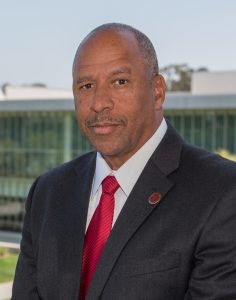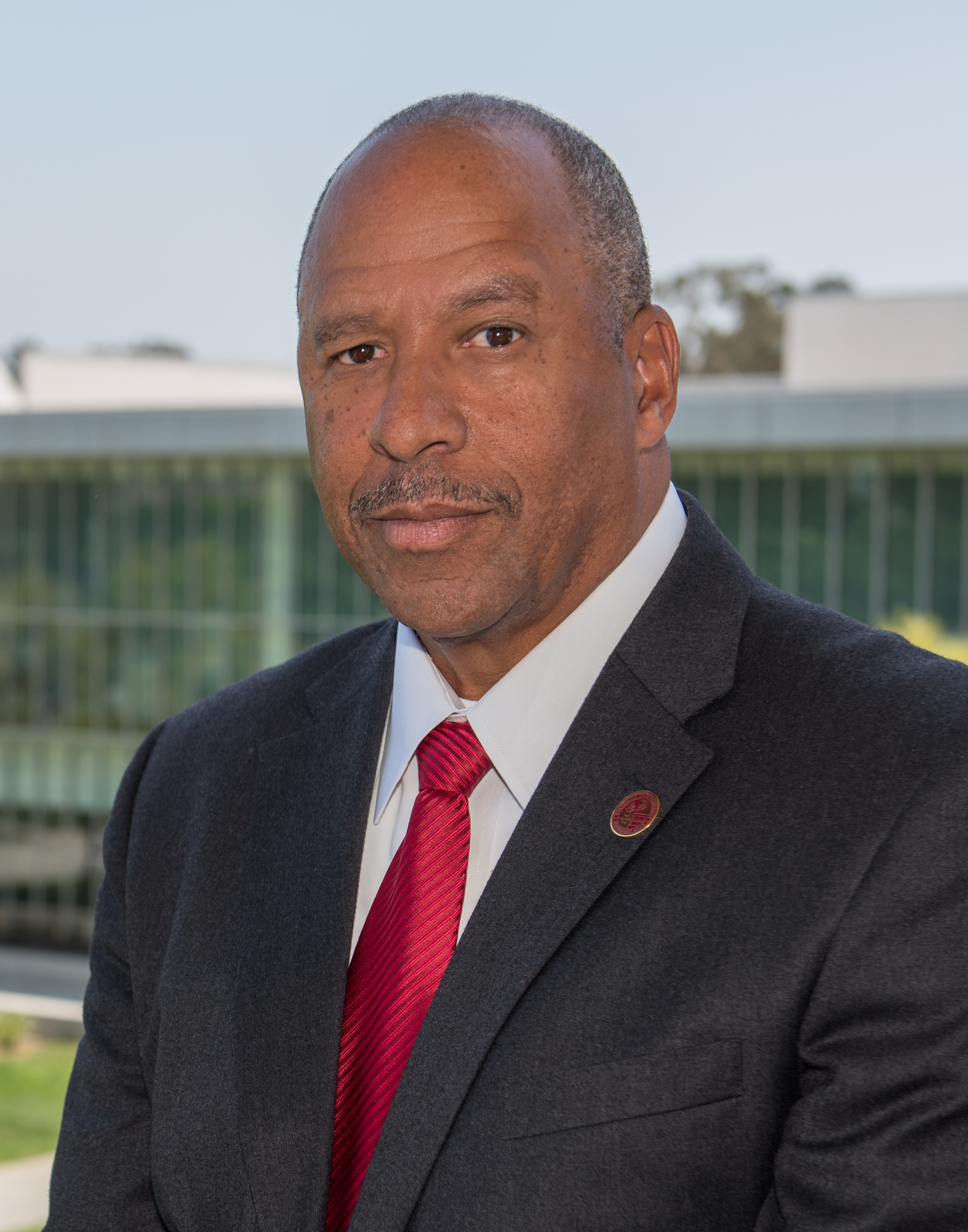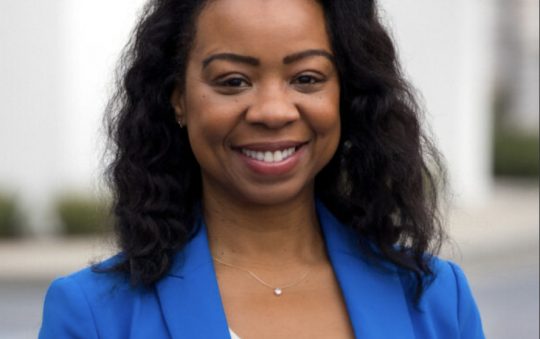
Avoiding the scandalous incongruence between what the emancipation proclamation preached and what was actualized.
Juneteenth celebrations were in full force this week in communities throughout the country. Interestingly, January 2023 marked the 160th anniversary since the Emancipation Proclamation was signed by President Lincoln, which people believed freed slaves throughout the nation. And yet, for all of its celebratory flare, the presidential order only partially achieved what it was lauded for.
The moral and symbolic power of the executive order and public policy, as profound as it was and is, was contrasted with the reality that reportedly, more than 500,000 slaves in border states like Maryland, Kentucky, Missouri, and Delaware were not covered by the document.
But wait a minute! How does that phenomenon happen in the midst of a presidential directive? First, to call President Lincoln “the Great Emancipator” is a title that appears to be embellished by idealism rather than fact. Nikole Hannah-Jones, in her substantive text entitled The 1619 project(2021), chronicles the reported narratives Lincoln actually verbalized, including statements about how the White race suffered from the presence of Black people; that while he thought enslavement to be cruel and inhuman, he was not a believer in true equality among White and Black races; and that one solution after slavery was abolished would be for Black people to leave the country they had helped to build.
With the nation’s chief executive and the document’s primary architect brokering a bi-partisan political deal to try and preserve the union while holding on to these biases and sentiments, it is little wonder why the implementation of the Emancipation Proclamation was so difficult to achieve.
I have found that in life, and especially in the human condition, there is often a gap between aspiration and actualization. The ability for all people of African descent to benefit from that order and historic document depended on both the unwavering advocacy of the president, but also various states in the nation cooperating with that directive, even in states like Texas where news that slaves had been freed did not reach them until some two and a half years later in June of 1865.
Alternately, the order required a level of accountability and enforcement by the federal government that somehow at that time, seemed more illusionary than real. Perhaps that can be understood if one balances the cost of actually granting true freedom and equal rights to Black citizens against the former president’s hesitation to severely offend the sensibilities of White people and political foes who were generally not in favor of Black equality.
Having spent more than 40 years of my professional career as a psychologist, academician, scholar, and clinician at the University of Pennsylvania, the University of California, Irvine, and now as the chief executive of California State University, Dominguez Hills, I’ve had lots of opportunity to experience and review different institutions. I’ve explored their profiles, histories, and missions for training new generations of educated students prepared to examine career pursuits that include professional jobs or further study at the graduate and professional school levels.
Whether a Carnegie classified Research 1, 2, 3, or regional comprehensive, these universities share with other colleges a commitment to enroll students, create academic and co-curricular learning opportunities that access the creative and generative capacities of their intellects, help them achieve certain levels of mastery commiserate with their specific degree attainment, and graduate them poised and ready to engage in opportunities that align with their individual goals and aspirations.
However, while many institutions’ offerings are characterized by these experiential opportunities their students admire and appreciate, there are some cohorts of their student body, particularly African American and other people of color, who experience a very different vision and interpretation of what I suspect institutions intend and promise.
It is that incongruence I wish to comment on in this article because as much as I admire what we do in institutions of higher learning, it is always appropriate to review and assess whether the mission we intend is consistent with the outcomes we yield and achieve across all cohorts of students we claim to care about. This is especially true for students of African descent.
In my mind, higher education promises several things to Black students who seek to fulfill their academic dreams.
It represents:
- A social contract that delivers on the promise and possibility of education for Black people based on the reciprocal investment people of African descent make in its institutions
- A vehicle for improving educational access and outcomes for Black people at every level of the academy, including students, faculty, staff, and senior executives
- A robust series of opportunities that harnesses the best of Black talent to address the needs of an institution or organization in comprehensive ways
- A platform for individuals to exhibit demonstrated proficiency in educational endeavors that allow people of African descent and others to thrive despite the challenges and adversities of individual, institutional, and societal racism and racial inequities
- An environment where students can develop and enhance critical thinking skills, learn to supplement biases and assumptions with facts and data that help them form more cogent and persuasive arguments, and challenge preconceived and biased notions regarding cultural differences in their peers and themselves; and
- A mechanism of affordability that allows for education to be attained without saddling the student and their family with enormous and crippling debt
Consequently, as I think about operationalizing Black excellence in higher education within the context of authentic “freedom”, using the frames articulated above as my preamble, I would expect to find several characteristics present in those institutions.
These include strong enrollment trends for African American students; robust retention efforts and persistence rates; support services that help students address needs for competent advising and mental health care; initiatives that help African American students create a cultural comfort zone in the midst of what is sometimes perceived as a sea of cultural sterility; diverse faculty with African American professors and curriculum being reflected in all departments throughout the institution; faculty attitudes and classroom environments that affirm rather than assault students’ humanity with micro-aggressions, micro-assaults, and micro-invalidations; graduation rates that compare favorably with other demographic cohorts; and life trajectories for students and their families that have been elevated as a result of their academic achievements and degree attainment.
Being a chief executive in a regional comprehensive institution that is part of the California State University system and an African American president at that, I have a particular vantage point, albeit biased, from which to view the relationship between promises made and promises realized in the realm of higher education. In this moment, I’m recalling, for example, an article by Scott Pulsipher (2021), who, in writing for Forbes magazine, argued that at its core, higher education represents a pathway to opportunity that should be open to all.
In reinforcing my belief that higher education has fallen short in its mission to create that pathway for all people of culturally and economically diverse backgrounds to travel successfully, he further argued, as many have before him, that while talent in our students is universal, the freedom to traverse those roads of opportunity are not, especially for those students who are not wealthy, privileged, or otherwise advantaged. Indeed, realities are different for those who live their lives at the margins of society, those “faces at the bottom of the well” Harvard’s Dereck Bell spoke so eloquently about (Bell, 1992).
Several years ago, the Campaign for College Opportunity (CCO), in its report on the “State of Education for Black Californians” (2021), also argued that where Black students are concerned, higher education needs to close the persistent college preparation, access, and completion gap. CCO has also recommended that university and college leaders must create a more welcoming environment on campuses that provides African American students with a strong sense of belonging by increasing the proportion of Black faculty & staff, who reflect the experience of students and recognize their assets and strengths.
While synthesizing the perspectives from two very different educational entities, I do not want to ignore the fact that some African American college and university students are succeeding and thriving in institutions across this country. Thus, no observation can be absolute, even as I remember that the question here is not about individual stories of success, but more about the persistent equity gaps in many institutions in the nation where metrics of enrollment, persistence, retention, and graduation for African Americans are compared with their other demographic counterparts.
Indeed, there is a common denominator to their narratives above that aligns with my own thinking about higher education and Black students. Clearly, higher education is teetering on the brink of unfulfilled promises where Black students are concerned. And yet, efforts continue to be made in institutions across America to help African American students realize a fuller measure of their promise and possibility.
And so, this year’s Juneteenth, or Freedom Day commemoration invites us to interrogate how do we in higher education really assess whether the opportunities promised to students of African descent align with those that they realize? Certainly, the State of California has taken one of the most aggressive postures by standing up a Governor appointed Reparations Task Force in 2020. Their preliminary and near-final report, which was recently released in draft, chronicles the harm and discrimination imposed on Black people and makes a case for how the residuals of slavery, oppression, and racism continue to have lingering impacts on the educational outcomes for people of African descent.
From legalized discrimination supported by public policy to the under-resourcing of public schools in predominantly Black areas, and even the implementation of a state proposition (Prop. 209) that restricted and, in some cases, prevented the ability of higher education institutions to address past wrongs through institutional policies on recruitment, admissions, economic aid, hiring, etc., it is clear from that report that educational freedom for Black people has yet to be truly realized (Custred & Wood, 1996).
Another avenue of exploring this question is acknowledging that data can tell part of the story as we look at admission, enrollment, retention, persistence, graduation rates, and the equity gaps in those numbers compared to other demographic cohorts. Those national data, and conversations with a trusted colleague (Olschwang, 2023), indicate the following:
Eligibility for Admissions to Colleges and Universities
Black students continue to be underrepresented in higher education (Adedoyin, 2022). According to the National Center for Education Statistics (NCES, 2022), there were 1.9 million Black students enrolled in higher education in the Fall of 2020 (National Center for Education Statistics, 2022). Black students made up 14% of enrollment but only 9% of degree completion, and they are unevenly represented across institution types (De Brey, Snyder, Zhang, & Dillow, 2021).
For example, between 2011-2020, over 400,000 Black students dropped out of community college (HCM Strategists, 2022). This represents a decline in community college enrollment by 44% (Weissman, 2022). Ironically, Black students are more likely to enroll in a community college because for some, only 57% have access to the courses needed for college readiness, and 61% are not able to meet the ACT benchmarks (Bridges,2018). Black students made up 21% of enrollment at for-profit institutions, 12% of the population at 4-year public institutions, and 8% at elite research institutions (De Brey, Musu, McFarland, Wilkinson-Flicker, Diliberti, Zhang, …& Wang, 2019).
HBCUs account for 3% of the colleges and universities and enroll over 10% of Black students (Bridges, n.d.; United negro college fund, n.d.). Overall, enrollment in higher education has increased a few percentage points since the start of the pandemic, however, first-year enrollment for Black students is down 6% compared to a year ago (National Student Clearinghouse Research Center, 2023).
Admission Rates
Nearly half of applicants are admitted to a college or university in the US, with an admission rate of 68% (National Center for Education Statistics, 2022). For first-time degree or certificate seeking undergraduate students, there is a 60% admission rate. Institutions with open admissions hold a 49% admissions rate for public and private non-profit or for-profit schools.
Those with some admission requirements that include at least one requirement for grades, class rank, school record, college prep, recommendations, showed a rate of 51% (Clinedinst, 2019). Among institutions with the lowest admissions rates are highly selective institutions with an acceptance rate of less than 10%, where the majority of students at their institution are typically White and Asian (Chetty, Friedman, Saez, Turner, & Yagan, 2020).
Retention/Graduation
Retention and completion are complicated by many factors for Black students. Black students, on average, pay a higher price of attendance as compared to White students and are more likely to receive Pell Grants and take out federal loans to finance their education as compared to White students (by 17%) (Baker & Montalto, 2019; Levine & Ritter, 2022). Over 65% of Black college students are independent and enroll while working full-time and often with family responsibilities (Bridges, 2018).
A recent study by Lumina and Gallup (2023) examined the campus climate factors impacting retention and found that in addition to these responsibilities, students faced cultural challenges, including discrimination, lack of representation, and an unwelcoming environment. Hence, there is a high emotional and social cost, in addition to economic (Museus, Ledesma, & Parker, 2015). Given the economic downturn, there is also a greater pressure to demonstrate the cost and value of a degree.
The 6-year college completion rate is 40% for Black men and 60% for Black women (Causey, Lee, Ryu, Scheetz, & Shapiro, 2022; Reddy & Siqueiros, 2021). These rates are lower than any other racial/ethnic group and have been for decades. Black students remain underserved in tuition reductions, childcare, and financial aid, among other areas.
A third vantage point from which to view promises realized is to ask ourselves, as institutional gatekeepers, a series of questions that chronicle the efforts we are making at our universities and colleges to support student achievement. Those questions might include inquiry into three domains: students, faculty, and curriculum, with the hope that we can all answer in the affirmative, and if not, use those questions as markers to set goals for improvement.
Where Students Are Concerned, Institutions Might Investigate:
- What are we doing to increase the enrollment of students of African descent on this campus?
- What are we doing to create a climate on each campus that ensures Black students feel welcomed, affirmed, and like they belong on campus?
- What are we doing to ensure that programs and services (cultural affinity centers, clubs and organizations, financial aid, and scholarships) are in place that support and contribute to increasing the rates of retention, persistence, and graduation rates of African descent students? This is about helping students create a cultural comfort zone in the midst of what many Black students perceive as a sea of cultural sterility.
- Do we offer culturally competent advising to help students stay on track and elevate their trajectories toward success?
Where Faculty Are Concerned, Institutions Might Interrogate:
- What are we doing to increase the intentional recruitment of African American and other diverse faculty in specific disciplines like education, business, the natural & behavioral sciences, humanities and the arts, STEM, etc.?
- How are our institutions financially supporting African descent faculty with resources to initiate research, professional development, or programmatic initiatives that better support Black students and other students of color?
- What is the institution doing to create a climate of welcome and support that allows faculty across disciplines to connect and commiserate with Black colleagues throughout the various campuses?
When it Comes to Curriculum, Institutions Might Want to Explore:
- What new courses are our institutional curriculum committees and individual faculty developing to ensure a more culturally relevant content that is aligned with each academic major and department so that students can see themselves reflected within the fabric of all academic disciplines?
- How is the existing curriculum in our academic disciplines updated and changing to be more inclusive of culturally different perspectives and content?
- How are the instructional methodologies and systems of pedagogy employed by faculty keeping pace and adapting to the ways culturally different students learn best?
Closing
If we can argue that emancipation should equal freedom from the way things used to be to the way things should be, how are our institutions of higher education using their time, intellectual assets, research agendas, modes of academic instruction, and co-curricular learning opportunities to create a greater degree of congruence between what currently exists for Black students in higher education, and what we all hope higher education to be for them?
As this year’s 160th anniversary of the Emancipation Proclamation looms over us, it is my sincere wish that most, if not all institutions of higher learning pause to reflect on this important question and take a critical look at their own convergence and divergence between what they intend and subsequently promise, and how those intentions are experienced by Black students on each of their campuses.
Thomas a Parham, Ph.D., is the president of California State University, Dominguez Hills.







